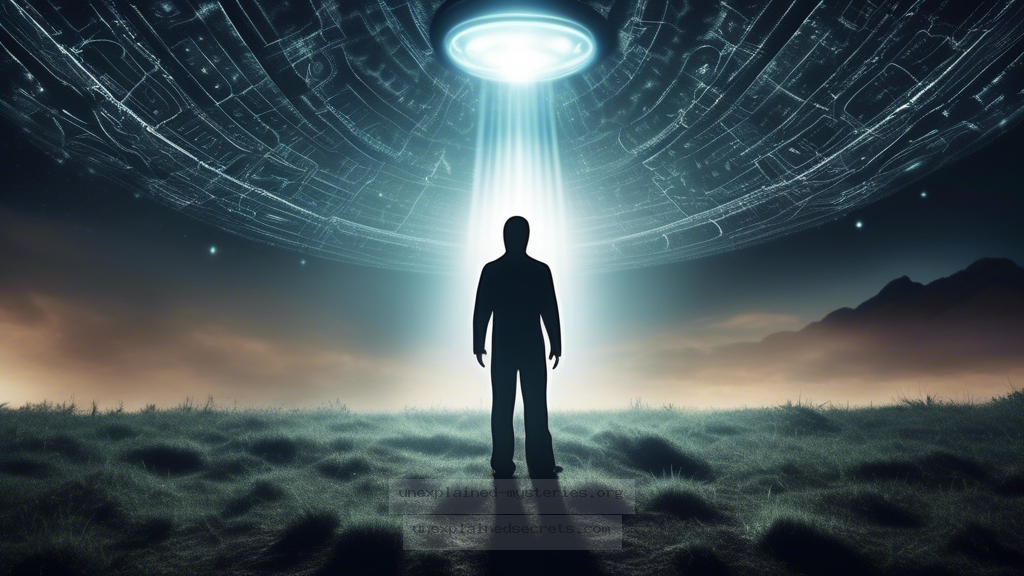What Do the Patterns of Alien Abduction Cases Reveal About the Phenomenon?
What Do the Patterns of Alien Abduction Cases Reveal About the Phenomenon?
The phenomenon of alien abductions has fascinated and bewildered humanity for decades. From the chilling accounts of individuals who claim to have been taken by extraterrestrial beings to the scientific community’s attempts to explain or debunk these experiences, the question of what patterns exist in these cases is crucial for understanding the broader implications of these events. This analysis will explore the commonalities among abduction reports, the psychological and sociological theories behind them, and the potential future of research in this captivating field.
Historical Context of Alien Abductions
The modern alien abduction narrative gained traction in the mid-20th century, particularly after the infamous Betty and Barney Hill case in 1961. This case featured a couple who claimed to have been abducted by extraterrestrials and later underwent hypnosis to recover memories of their experience. Their story set the stage for a plethora of similar accounts that followed. The 1970s and 80s saw a surge in reported abductions, often characterized by consistent details: bright lights, medical examinations, and the presence of strange beings. This period marked the beginning of a cultural phenomenon that intertwined with the rise of UFO sightings and the exploration of extraterrestrial life. Understanding these historical cases provides a foundation for analyzing the patterns and themes that have emerged over the decades.
The Core Concepts Behind Abduction Patterns
Numerous researchers have sought to identify patterns within abduction cases, leading to the development of several core concepts that are frequently cited. One prevalent theme is the “missing time” phenomenon, where individuals report lapses in memory during their experiences. Another is the “three stages of abduction,” which often include capture, examination, and release. These stages provide a framework through which abductees describe their experiences, revealing striking similarities across cases. Such patterns raise questions about the nature of these encounters: Are they a product of psychological phenomena, or do they suggest something more extraterrestrial in origin?
Key Insights:
- Missing time is a common element in many abduction stories.
- Abduction experiences often follow a three-stage pattern: capture, examination, and release.
- These patterns may indicate psychological phenomena or genuine extraterrestrial encounters.
Real-World Examples of Documented Cases
Several high-profile abduction cases illustrate the common patterns found across reports. The Pascagoula Abduction in 1973 involved two men, Charles Hickson and Calvin Parker, who claimed to have been taken aboard a UFO by robotic beings. Their detailed accounts included descriptions of medical examinations and a sense of time loss. Another notable case is that of Kelly Cahill, who in 1993 reported being abducted in Australia. Her experience included vivid memories of strange symbols and a terrifying encounter with alien beings, fitting the established patterns of abduction phenomena. These cases, among many others, not only corroborate each other but also highlight the recurring themes identified in the study of abductions.
Psychological and Sociological Theories
While some researchers argue for the validity of alien abduction experiences, others suggest psychological explanations. The “sleep paralysis” theory, for instance, posits that many abduction experiences can be attributed to individuals waking up in a sleep paralysis state, leading to hallucinations of alien beings. Additionally, sociologist Dr. David Hufford proposed the “cultural belief” model, suggesting that these experiences are influenced by societal narratives surrounding UFOs and extraterrestrials. This perspective emphasizes the impact of culture on personal experiences and memory formation, allowing for a more nuanced understanding of abduction narratives.
Common Misconceptions and Clarifications
Misconceptions about alien abductions abound, often leading to sensationalism and misunderstanding in both public discourse and scientific circles. One major misconception is that all abductees are completely sane and reliable witnesses. In reality, psychological factors, such as trauma or suggestibility, can play significant roles in shaping these experiences. Furthermore, not all cases involve hostile encounters; many individuals report feelings of peace or guidance during their experiences. Recognizing these nuances is essential for a comprehensive understanding of the abduction phenomenon.
Common Misconceptions:
- All abductees are mentally stable and reliable witnesses.
- All abductions are hostile and traumatic.
- Abduction experiences are solely a product of extraterrestrial encounters.
Practical Implications for Investigation
For those interested in investigating alien abductions, a careful and methodical approach is essential. First, establishing rapport with potential abductees can help them feel comfortable sharing their experiences. Utilizing hypnosis cautiously and ethically can also be beneficial for recovering suppressed memories, but it should be noted that this method is not foolproof and can lead to false memories. Researchers should also consider the use of psychological evaluations to discern possible underlying mental health issues that may influence abduction narratives. Ultimately, the investigation of alien abduction cases requires a balance between open-mindedness and critical thinking.
Future Developments in Research
The field of alien abduction research is evolving, with new technologies and methodologies emerging. The integration of psychological sciences with technological advancements, such as brain imaging and artificial intelligence, may provide deeper insights into the phenomena. Moreover, increased collaboration between researchers in different fields—such as psychology, sociology, and astrophysics—could lead to more comprehensive understandings of the patterns associated with abductions. As public interest in UFOs and extraterrestrial life continues to grow, the potential for new discoveries remains high, with ongoing studies aiming to shed light on this enigmatic subject.
Alternative Perspectives on Alien Encounters
A compelling aspect of the alien abduction narrative is the variety of interpretations and beliefs surrounding these encounters. Some individuals view abductions as spiritual experiences, suggesting they serve as a form of awakening or enlightenment. Others approach the phenomenon from a scientific standpoint, advocating for the need for rigorous investigation and evidence prior to drawing conclusions. Each perspective adds a layer of complexity to the discourse, emphasizing the multifaceted nature of human experience in relation to the unknown.
Comparative Analysis of Abduction Reports
| Case Name | Year | Key Features | Outcome |
|---|---|---|---|
| Betty and Barney Hill | 1961 | Hypnosis, missing time, medical examination | Public awareness, cultural impact |
| Pascagoula Abduction | 1973 | Capture by robotic beings, time loss | Credibility through multiple witnesses |
| Kelly Cahill | 1993 | Symbols, emotional responses, guided experiences | Increased interest in Australian abductions |
This comparative analysis of notable cases reveals the similarities and differences in experiences, while also illustrating the overarching patterns that characterize abduction narratives. Each case contributes to a broader understanding of the phenomenon, helping to shape ongoing discussions and studies.
Conclusion
The exploration of patterns in alien abduction cases opens the door to understanding a complex and often misunderstood phenomenon. From historical accounts to psychological theories and sociocultural implications, the investigation of these experiences reveals much about human perception, belief, and the unknown. As researchers continue to delve into this captivating subject, the potential for new insights remains vast, inviting both skepticism and wonder. Ultimately, whether these encounters are real or a projection of the human psyche, they serve as a reminder of our enduring fascination with the mysteries of the universe.
Other Articles
Recent Posts
- What Happened to Flight MH370? The Conspiracy Theories That Still Haunt Us
- What Secrets Lurk Within the Walls of the Infamous Trans-Allegheny Lunatic Asylum?
- What Evidence Supports the Existence of Bigfoot in the Pacific Northwest?
- What Happened to the Indus Valley Civilization? Unraveling the Mysteries of Ancient Urban Life
- Can Telepathy Be Scientifically Proven Through Laboratory Evidence?







